What's New
Displaying results 4601 - 4610 of 4914
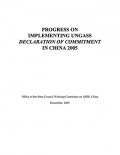
Resource | Publications,
Over the past two years, the response to HIV/AIDS across China has intensified, and the Chinese government has strengthened leadership in HIV/AIDS. Effective measures have been launched in each key area of HIV/AIDS prevention, treatment, care, and support for comprehensive work in these areas has improved considerably.
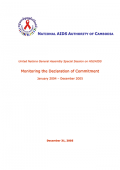
Resource | Publications,
The good news is that HIV prevalence among adults continues to decrease. According to the 2003 HIV surveillance data released by the National Centre for HIV/AIDS, Dermatology and STIs (NCHADS) in December 2004, the estimate of the national prevalence of HIV stands at 1.9% of all people aged 15 to 49 years, down from 2.2% in 2001. In all sentinel groups that formed part of the HIV surveillance system, the decline in HIV prevalence is evident. Levels of awareness about HIV/AIDS have gone up, and behaviour has changed. The prevalence among ante-natal care (ANC) attendees declined from 2.9% in 1999 to 2.2% in 2003. Among sex workers prevalence decreased from over 40% to around 20% over the same period.

Resource | Publications,
The category “men who have sex with men” (or males who have sex with males - MSM) was developed in response to a recognition that not all male-to-male sexual behaviours falls within a framework of sexual orientation or identity.
In Bangladesh, the primary framework of male-to-male sex appears to be that based on gendered identities: males such as kothis or hijras who self-identify with the feminine, and males from the normative male population who self-identify as men.

Resource | Publications,
The purpose of the 2005 Progress Report on the National Response to HIV is to provide a quick overview of the response to HIV and AIDS in Myanmar during the year. In its role as the coordinator of the national response to HIV and AIDS, the National AIDS Programme has collected data and information from all partners working on HIV in Myanmar, including those from Government Departments, United Nations organizations and national and international non-governmental organizations. This report there- fore presents a snapshot for 2005 of the collective activities of programmes on HIV in Myanmar.
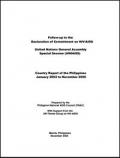
Resource | Publications,
For the past decade, the HIV situation in the Philippines has been described as "low and slow," indicating low prevalence rates and slow spread of the infection even among those regarded as most-at- risk populations (classified as "high risk groups"- HRG - in the surveillance surveys).
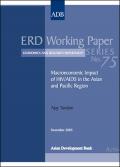
Resource | Publications,
This paper reports estimates of the economic impact of HIV/AIDS in the Asian and Pacific region using a standard growth model. Following previous research on this issue, an economy wide aggregate production function is estimated with health capital as an input. HIV/AIDS is assumed to influence the accumulation of health capital proxied by a life expectancy shortfall measure. The model is estimated empirically using cross-country panel data spanning the period 1960–2000. Using a global sample, results indicate a negative impact of increasing HIV/AIDS prevalence on health capital and on economic growth. Using fairly conservative projections for HIV/AIDS prevalence, the model predicts a particularly large adverse impact on economic growth in Cambodia and Papua New Guinea.

Resource | Publications,
In most countries, TB patients are increasingly being detected but the majority of HIV cases are not. The current knowledge of the interaction between the epidemics in the Region is restricted to those who access health services and are diagnosed with either disease.
In order to address Region-specific issues in this area reflecting the current epidemiological situation and the status and capacity for delivering the necessary services in the countries, there has been a call from Member Countries in the Region to conduct a technical forum and to outline regional strategic directions for HIV surveillance among TB patients. WHO/SEARO has responded to this need by organizing an informal consultation of selected programme managers and experts, including those from countries in the Region that are facing a generalized or concentrated HIV epidemic.
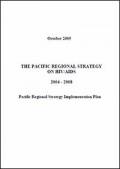
The Pacific Regional Strategy on HIV/AIDS (2004-2008): Pacific Regional Strategy Implementation Plan
Resource | Publications,
The Pacific Regional Strategy on HIV/AIDS (2004-2008) is designed to support national efforts to prevent and control HIV/AIDS and to strengthen work at the regional level through improved coordination, collaboration and partnership between regional organizations and national programmes.
The goal of the strategy is a broad regional goal to which all HIV/AIDS prevention and care activities in the region contribute. It was endorsed by regional leaders at the 35th Pacific Islands Forum meeting held in Apia, Samoa, on 8 August 2004. In endorsing the five-year regional strategy, the Pacific leaders recognized the urgent need to effectively address HIV/AIDS in the region, and therefore tasked the Secretariat of the Pacific Community (SPC) with developing a detailed implementation plan for the Strategy.

Resource | Presentations,
This is a presentation regarding the current Situation of HIV/AIDS in Malaysia, presented by the Center for Multidisciplinary Studies on Health and Development Inc last October 2-8, 2005.
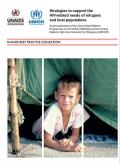
Resource | Publications,
The ongoing plight of refugees and displaced people worldwide is one of today’s great tragedies. In 2005, the global number of refugees and displaced people rose by 13% to 19.2 million people. Over four million of these refugees and other displaced people live in sub- Saharan Africa.
In this study, UNHCR and UNAIDS seek to inform and support key decision-makers on HIV-related issues facing refugees, other populations of concern to UNHCR, and the populations of host countries. The content of this document focuses on sub-Saharan Africa, but the concepts discussed are applicable to refugee situations outside this region.





